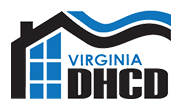BEAD Final Proposal
The materials below represent Virginia's NTIA-approved BEAD Final Proposal, pending NIST review
- The Office of Broadband has revised these data uploads, as directed by NTIA. These updates were posted to this website on October 27, 2025.
- The Office of Broadband will continue to work provisionally awarded subgrantees that submitted public comments on this template contract to finalize edits prior to contract execution.



